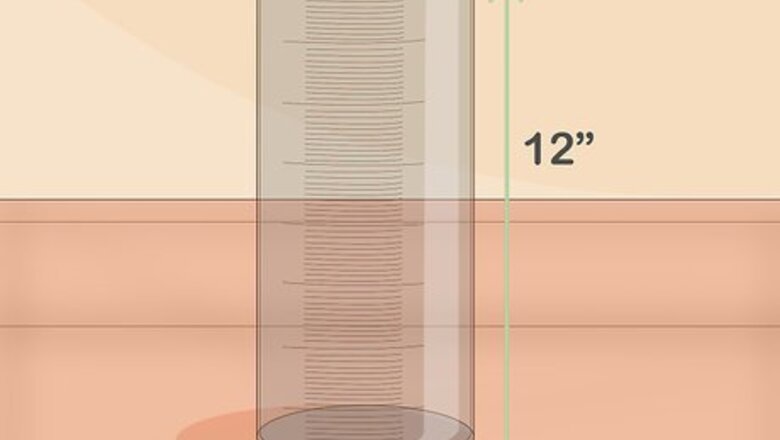
views
X
Research source
Their measurements help farmers make decisions about planting, harvesting, and irrigating crops; they also enable engineers to design effective storm drains, bridges, and other structures. While most professional devices for this purpose use electronic systems nowadays, anybody can assemble their own gauge to measure rainfall at home.
Building Your Gauge

Find a clear, cylindrical container. This cylinder can be either glass or plastic, and should be at least 12 inches tall. The shape is important: if the top is wider than the bottom (or narrower) it will require much more calculation and measurement. It doesn’t actually matter how wide container is, so long as it’s the same diameter all the way through. As the volume of the container gets bigger—from say, a coke can to a mop bucket—so does the area which collects the rain. Because of this, one inch of rainfall will be recorded consistently between cylinders of varying sizes.
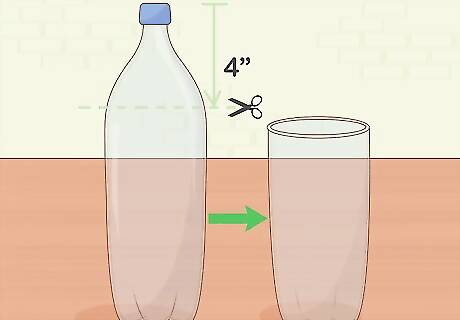
Make a container. If you don’t have a cylinder on hand, you can make an equally effective gauge with an empty 2-liter soda bottle and little work. Using scissors or a knife, cut the top 4 inches of the bottle off. Don't worry about the uneven bottom of the bottle. That will be taken care of in the next step.
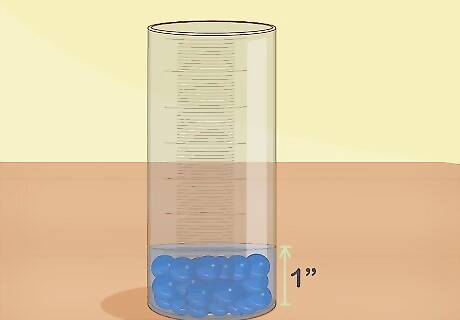
Weigh your gauge down with pebbles. Because rain will often be accompanied by wind, you’ll want to steady your gauge so that it can stay upright through a storm. Fill the bottom with pebbles or marbles, but don’t go higher than an inch or so. Once that’s been done, you’ll want to fill your container with water, to provide a level starting point for your scale. Your weights will be taking up volume, and so we don’t want them included in the measurable area. Rocks, stones, marbles: any small, relatively heavy objects will do, as long as it won’t absorb any of the water. If you’ve created your own gauge with a soda bottle, make sure the entire bottom (the four separated points of the base) is filled with water and stones, to provide a flat starting point for your scale. As an alternative to placing pebbles in your gauge, you could place it within a sturdy container, such as a heavy bucket or flowerpot.
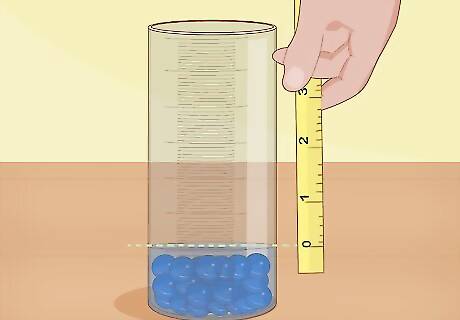
Inscribe a scale upon your container. This can be done with a waterproof sharpie. Hold a ruler or measuring tape up against your bottle, and line its zero up with the current water level of your gauge. Your scale’s zero should also be at this water level. If you’ve opted to go pebble-free and are going to place your rain gauge inside a flower pot, you won’t have any water in your gauge yet. In this case, zero will be at the bottom of your container.

Place it under the open sky, on level ground. You need level ground to lessen the chance of your gauge tipping over. Ensure your gauge has no obstructions above it, e..g trees or eaves, as these will disrupt your measurements.
Measuring Rainfall

Check your gauge every day. To determine how much rain has fallen in the previous 24 hours, you’ll need to regularly check it every 24 hours! Read the gauge by looking at the waterline straight on, at eye level. The water line's surface will be curved; this is the meniscus, formed as the water comes in contact with the container and creates surface tension. Your reading needs to be from the bottom of the curve. It’s important to check it every day even if there hasn’t been any rain. You can lose water from evaporation, and water mysteriously showing up in your rain gauge without the accompanying rain clouds might mean your rain gauge needs a new spot (sprinklers are a common culprit).
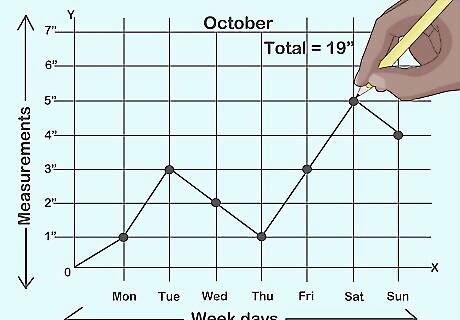
Mark the amount of rainfall on a graph or chart. For example, you could make a 7 x 7 chart, marking the days of the week along the x-axis and 1 to 7 inches (2.5 to 17.8 cm) along the y-axis. After filling in a dot at each appropriate intersection of rainfall (in inches) and the day of the week, you can use a ruler to connect the dots and see the fluctuations in the rain measurement for that week.
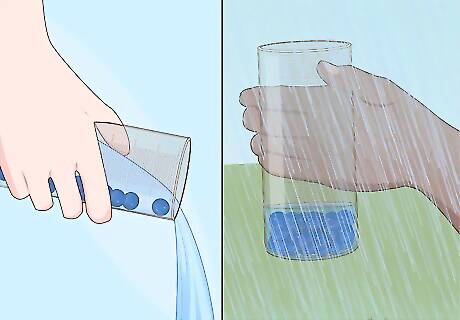
Empty the rain gauge. After each recording, you’ll want to empty the rain gauge to ensure an accurate reading. Ensure you keep the same stones in your gauge, and refill water up to the zero on your scale. If you ever add or subtract stones from your gauge, ensure the water is again filled to the zero point before setting your rain gauge back in place.
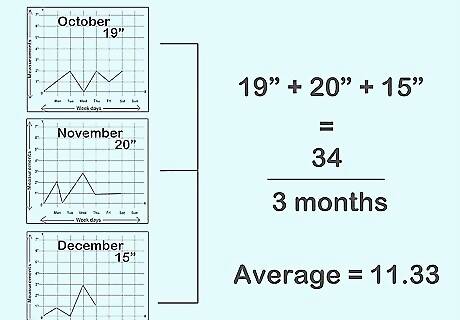
Calculate the averages. Once you’ve recorded data for a month, you can analyze your data and see overall rainfall trends. Adding up the rainwater of all 7 days in a week, then dividing it by 7, will give you the average rainfall of that week. Over a longer period of time, you could do this for months (or even years, if you’re particularly dedicated). The formula for finding an average is easy to apply. The average equals the sum of all the items (in this case, rainfall measurements for a day, week, or month) divided by the number of items (however many days, weeks, or months you’ve added up). If you're looking for average weekly rainfall over 4 weeks, with recorded weekly rainfall totals of 20 inches, 12 inches, 6 inches, and 25 inches, we would say 20 + 12 + 6 + 25 = 63 (the sum of the items) / by 4 (the number of weeks) = 15.75 inches average weekly rainfall.




















Comments
0 comment